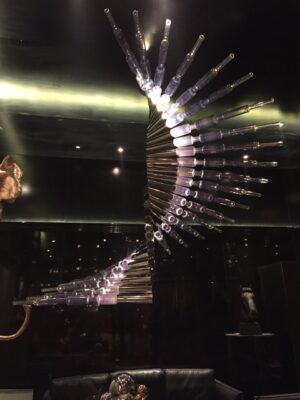What is Installation Art and How is it Any Different from Ordinary Art?
Although lighting has always played an important role in architecture, the explosion in the use of light as medium in art did not happen till the 1960s. The early part of the 20th century saw artists search for new mediums and forms of expression. They felt the need to reject traditional models that did not properly reflect their contemporary reality. It was in this context that light was first used as an alternate medium.

Today, the use of light as an expression of art or light art in short has come a long way. Light as art is the ultimate merging of beauty with form, seamlessly fusing a synergy of sense with sensibility. It is this philosophy of seamless integration that has shaped Klove’s light art paradigm. It illuminates and enlightens both indoor and outdoor spaces through a gamut of customized experiences. Light art offers designers and artists new avenues to explore the space around them by interlinking form and movement. Although light art has many similarities with traditional art, it also has some key differences. Light art can use negative space more effectively and light installations can be scaled much more effectively. At Klove, light installations mimic different natural settings in the indoor space in a spontaneous manner offering interior designers and luxury home owners a much wider option to experiment till they hit the perfect combination of artistry and utility.

The rapid development in lighting tech means that the art of light installations is a dynamic and evolving field. At Klove, we imbibed new developments in surface textures and finishes and the development of new materials with specific reflective, refractive or absorptive properties, along with inventive ways of using various sensors for introducing creative lighting control into our projects. This makes Klove’s light installations very malleable. It gives them the ability to slide into any kind of setting.



